Bere Mill: The riverside gardens in Hampshire created in as natural and as sensitive a way as possible
Informed by the Japanese ‘landscape in the garden’ tradition, the naturalistic riverside gardens of Bere Mill, Hampshire, flow with ease into their languid surroundings says Tiffany Daneff. Pictures by Andrea Jones.
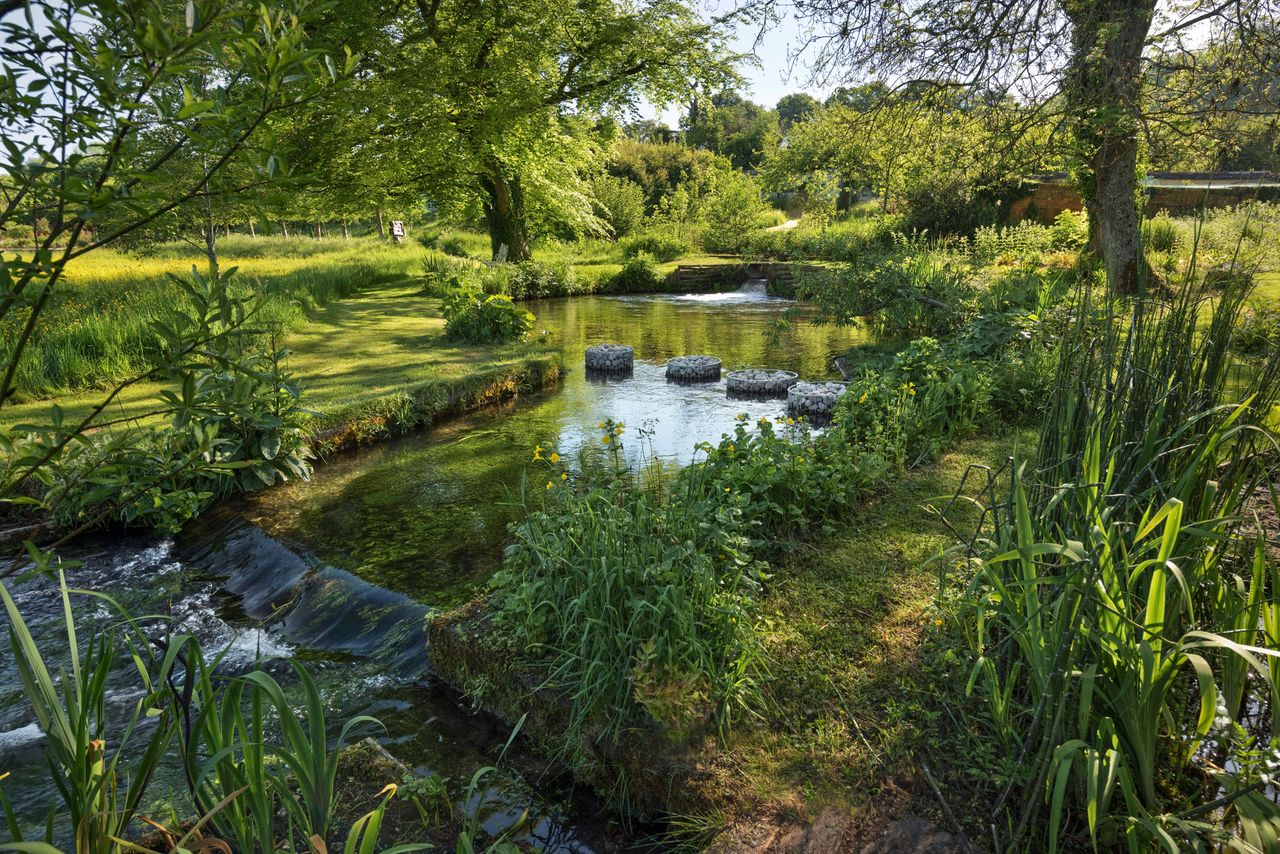
During Rupert and Elizabeth Nabarro’s first year at Bere Mill, a nightingale would sing in what is now the Wisteria Garden, an area of water meadow just across the River Test from the house and the rest of the garden.
There was barely any garden to speak of when they moved here 28 years ago, only an abandoned orchard below a handsome Hampshire wall and a derelict walled garden. The famous chalk river, where it was diverted through the watermill, had become a muddy stream with the unprepossessing remnants of a fish farm at the far end of the property. Yet the location, upstream of Whitchurch in the bottom of the wooded Hampshire basin, was idyllic. From the beginning, the Nabarros knew they wanted to bring this back to being a family home and to do so in as natural and as sensitive a way as possible.
The property — two knapped-flint barns and a red-brick mill house with 20 acres of meadow — had belonged to the Portal family, French Huguenots whose ancestor, Henri de Portal, had fled persecution and taken British nationality, eventually setting up a paper-milling business here in 1712. Harnessing the pure waters of the Test, the Portals hand-produced paper of such high quality that, in 1724, they won a contract with the Bank of England (which they still hold) to make the paper for banknotes.
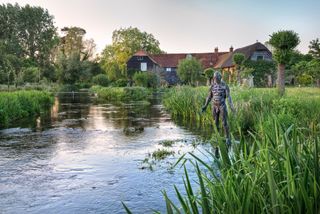
As the Portals’ success grew, they moved to a bigger home and let Bere Mill to tenants, which meant the grounds and the buildings largely escaped development. ‘The barn was converted to a corn mill in the early 19th century and there were big bits of leather hanging everywhere, chutes, large bins and so on.’ Mr Nabarro recalls. You can still see in the house and barns, he says, ‘a remnant of pre-industrial Britain’. With enormous sensitivity, the Nabarros restored the buildings, making themselves a comfortable home (there was no proper heating or electricity), yet left as much as possible of the past intact.
Not long after the work had all been completed, tragedy struck: fire broke out in the mill in 2018, ravaging the mill, the barn and much of the house. Once again, a huge restoration project had to be undertaken, but the most uplifting aspect of this otherwise dismal experience was discovering local people with the experience and dedication to rebuild the early-18th-century timbered barn and even finding experts who were able to restore their collection of fire-damaged books. Today, thankfully, all is almost back to how it was.
Inspired by the Japanese ‘landscape in the garden’ tradition (as described by Adam Nicolson in his book Sissinghurst) of the importance of anchoring a garden in its setting, Mr and Mrs Nabarro have created a design that, today, unfolds with natural ease along the generous banks of the river, which, being a chalkstream, does not flood.

‘We were in no hurry to do it quickly,’ says Mr Nabarro, who describes how they started by enclosing the land and then filled it in as the years went on. ‘We tried to live in the landscape, rather than impose upon it.’ This is particularly important in an idyllic spot such as this, especially as it is low lying, with long and open views.
Sign up for the Country Life Newsletter
Exquisite houses, the beauty of Nature, and how to get the most from your life, straight to your inbox.
One of the first things they put in was the avenue of limes that defines the approach to the house, swiftly followed by the hedges and the alders. The culverts and red-brick river walls, which date from the 1880s, were in remarkably good condition, but the pair did add some simple timber bridges that allow one to walk around the garden more easily, the finest of which is a humped wooden bridge cut from a felled wellingtonia.
A sculpture by the same hand, shipped from Australia (where Mrs Nabarro was born) was made of jarrah wood from the first bridge to span the Murray River connecting Victoria to South Australia.
Over the years, Mr and Mrs Nabarro have created a great many and varied areas of planting. The river bank is built up here, so the ground is very dry and ideal for Mediterranean plants, many of which thrive in the gravel garden near the house. This also includes bergenia, Japanese anemones, daphnes and salvias.
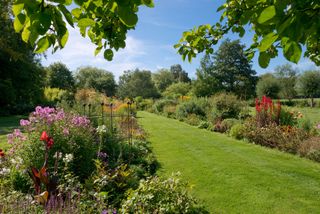
The Nabarros never employed a designer, although they did have some help in the form of skilful gardeners, especially in the early years; they were, says Mr Nabarro, incredibly generous with their knowledge. Among them was Rosy Hardy, whose nursery, Hardy’s Cottage Garden Plants, is close by. She suggested perennials for the long double border that runs from the back of the house towards what had been the fish pond, since been transformed into a lake, fringed with reeds, bamboo and iris.
The border was dug up and replanted about three years ago and most of the plants today have been chosen by the Nabarros. Late-summer highlights include small-flowered asters, heleniums and — an excellent choice — the tall, rust-red, semi-double Chrysanthemum Rumpelstilzchen.
Heading to the Bog Garden, past stands of Helenium Lemon Queen and monkshood that easily top 10ft, you will see stepping stones set into the gravel path. These have been carved by Pip Hall with the names of the Nabarro family, beginning with Rupert and Elizabeth, at the meeting point of two paths and radiating out towards their children and grandchildren.
Standing on this spot a few years ago, an architect friend, Andy Taylor of Patel Taylor, looked back at the house, then turned to face the lake. To complete the experience, he suggested that a bridge should be built to extend the line of the path across the dark water of the lake. The resulting boardwalk was constructed two winters ago and now brilliantly defines this end of the garden.
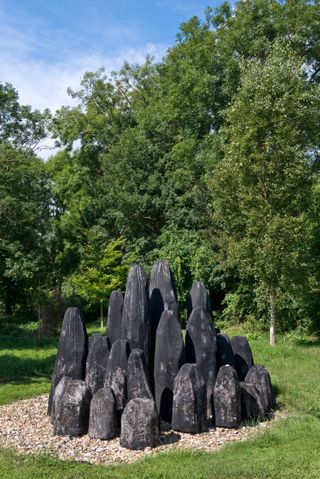
As with so much in the garden, serendipity had played its part. A similarly random event lies behind the Tea House. Many years ago, inspired by an illustration in a Sung Dynasty manuscript of a scholar’s hut, Mr Nabarro had sent the drawing to Rohan Ward, the teenage son of a friend in Australia, saying if he ever felt like coming out to do some carpentry in England he was more than welcome. Ten years later, the young man arrived and, employing traditional Japanese joinery, duly built the Tea House on a grassy slope overlooking the water meadow. The latter is now planted with Taxodium distichum and a grassy walk leads to a dramatic standing group of charred oak by David Nash.
The Wisteria Garden is so named because Mr Nabarro, a regular visitor to Japan and a connoisseur of Japanese gardens, had planned to fill it with a number of species of wisteria. However, despite running two drains and planting alders (grey and golden) as well as birches, the ground remained too wet. Instead, the wisterias are planted into huge pots sunk into the soil, in which they are doing very well.
There are roses here, too, and, in early spring, snowdrops and narcissus arrive. The nightingale has not returned yet, but for the Nabarros, there has been the greatest satisfaction in seeing the entirely natural appearance of early, marsh and pyramidal orchids.
Bere Mill, Hampshire, opens for the NGS on September 20 — pre-booking is required via www.ngs.org.uk
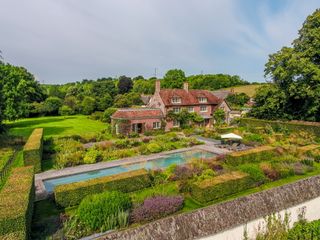
Credit: Strutt and Parker
Best country houses for sale this week
An irresistible West Country cottage and a magnificent Cumbrian country house make our pick of the finest country houses for
-
 From California to Cornwall: How surfing became a cornerstone of Cornish culture
From California to Cornwall: How surfing became a cornerstone of Cornish cultureA new exhibition at Cornwall's National Maritime Museum celebrates a century of surf culture and reveals how the country became a global leader in surf innovation and conservation.
By Emma Lavelle Published
-
 Jaecoo 7 SHS: Can you really get a luxury SUV for £35,000?
Jaecoo 7 SHS: Can you really get a luxury SUV for £35,000?The Chinese automaker Jaecoo lands on UK shores with the 7. We take it for a spin around Scotland and the north of England to see if the hype is real.
By Charlie Thomas Published